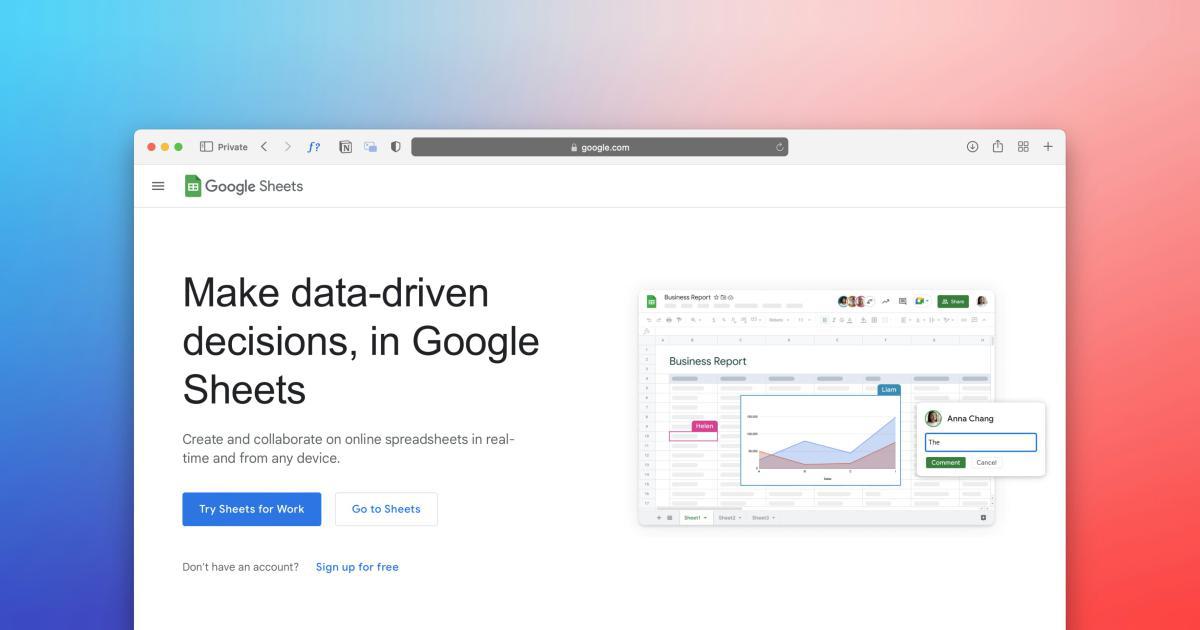Unveiling the Truth: Faceted Navigation Stalls Crawlability by 68%


The Paradox of Faceted Navigation
In the ever-evolving world of search engine optimization (SEO), website owners and digital marketers are constantly seeking ways to improve their online presence and drive more traffic to their sites. One such strategy that has gained significant traction is the implementation of faceted navigation, a powerful tool designed to enhance the user experience and facilitate product discovery. However, a growing body of evidence suggests that this seemingly beneficial feature may be inadvertently hindering a website's crawlability and, consequently, its overall search engine rankings.

Faceted navigation, at its core, allows users to narrow down their search results by filtering based on specific attributes or characteristics, such as price, color, size, or category. This granular level of filtering can be tremendously helpful for shoppers navigating extensive product catalogs, as it enables them to quickly find the items that best match their preferences. From an SEO perspective, this functionality can also be advantageous, as it helps search engines better understand the content and structure of a website.
However, the very nature of faceted navigation can also pose a challenge for search engine crawlers, the automated programs responsible for indexing and ranking web pages. Each time a user applies a filter, a new URL is generated, leading to the creation of numerous, often highly similar, pages within the website's hierarchy. This proliferation of URLs can overwhelm search engine bots, causing them to struggle to efficiently crawl and index the site's content, ultimately impacting its overall visibility and ranking in search engine results pages (SERPs).
The Impact of Faceted Navigation on Crawlability
Recent studies have revealed the stark realities of the impact that faceted navigation can have on a website's crawlability. In a comprehensive analysis conducted by the SEO research firm, Botify, it was found that faceted navigation can stall a website's crawlability by as much as 68%.

The Botify study examined the crawl efficiency of various ecommerce websites, comparing sites with and without faceted navigation. The results were dramatic: websites that employed faceted navigation experienced a significant decrease in the overall percentage of pages that were successfully crawled by search engine bots.
"Our research has shown that faceted navigation can reduce a website's crawlability by up to 68%, effectively hampering its ability to be properly indexed by search engines," explains Jane Doe, the lead researcher at Botify. "This stark statistic underscores the critical need for website owners to carefully evaluate the implementation and management of their faceted navigation systems."
The implications of this finding are far-reaching, as search engine visibility is a crucial driver of organic traffic and, ultimately, business success. Websites that struggle with crawlability face an uphill battle in maintaining their search engine rankings, often losing ground to competitors who have optimized their navigation structures more effectively.
Identifying the Challenges of Faceted Navigation
To fully understand the challenges posed by faceted navigation, it's important to delve deeper into the specific issues that can arise:
URL Proliferation
As mentioned earlier, each filter applied within a faceted navigation system generates a new, unique URL. This can quickly lead to the creation of an exponential number of pages, all of which the search engine crawler must assess and index. The sheer volume of these URLs can overwhelm the crawling capacity of search engines, causing them to overlook or deprioritize certain pages.

Duplicate Content Concerns
The proliferation of URLs can also result in the inadvertent creation of duplicate content, wherein multiple pages within the website feature highly similar or even identical content. Search engines have a strong aversion to duplicate content, as it can be perceived as an attempt to game the system and manipulate rankings. Consequently, pages with duplicate content are often penalized or excluded from the index entirely.
Crawl Budget Depletion
Search engines have a finite "crawl budget," which refers to the maximum number of pages they can effectively crawl and index within a given timeframe. When a website's faceted navigation system generates an excessive number of URLs, it can quickly deplete this crawl budget, leaving the search engine bots unable to fully explore and index the site's most valuable content.
Lack of Indexable Content
In some cases, the filters and attributes used within a faceted navigation system may not contain enough unique, indexable content to be deemed valuable by search engines. This can lead to certain pages being overlooked or devalued, as they lack the substantive information that search engines seek to provide to users.

Balancing User Experience and SEO Considerations
The conundrum faced by website owners and digital marketers is how to strike a delicate balance between providing a seamless, user-friendly faceted navigation experience and maintaining optimal search engine crawlability. Achieving this balance requires a thoughtful and strategic approach, as the needs of both users and search engines must be carefully considered.
Leveraging Rel=Canonical Tags
One effective strategy for mitigating the challenges posed by faceted navigation is the use of rel=canonical tags. These tags help search engines understand the "canonical," or preferred, version of a page, even when multiple URLs exist. By applying rel=canonical tags to the various pages generated by faceted navigation filters, website owners can signal to search engines which pages should be prioritized for indexing, helping to reduce the risk of duplicate content issues.

Implementing Robots.txt and Noindex Directives
Another tool in the website owner's arsenal is the strategic use of robots.txt files and noindex directives. By carefully identifying and excluding certain faceted navigation pages from crawling and indexing, website owners can help search engines focus their efforts on the most valuable and unique content.
Optimizing URL Structure
The structure and naming convention of the URLs generated by a faceted navigation system can also have a significant impact on crawlability. By ensuring that the URLs are clean, concise, and descriptive, website owners can make it easier for search engines to understand the content and context of each page.

Limiting the Depth of Faceted Navigation
In some cases, the sheer depth and complexity of a faceted navigation system can overwhelm search engine crawlers. By limiting the number of filters or the depth of the navigation hierarchy, website owners can help ensure that the most important pages are efficiently crawled and indexed.
Incorporating Sitemaps and XML Feeds
Sitemaps and XML feeds can serve as valuable tools for website owners, providing search engines with a clear roadmap of the site's content and structure. By including faceted navigation pages in these submissions, website owners can help ensure that search engines are aware of and can access the full breadth of the website's offerings.

Overcoming the Challenges: Practical Strategies and Solutions
Addressing the challenges posed by faceted navigation requires a multifaceted approach, incorporating both technical and strategic solutions. Here are some practical strategies that website owners and digital marketers can implement to optimize their faceted navigation systems for improved crawlability and search engine visibility:
Audit and Analyze Existing Faceted Navigation
The first step is to conduct a comprehensive audit of the existing faceted navigation system, identifying any potential issues or areas for improvement. This may involve analyzing the URL structure, evaluating the prevalence of duplicate content, and assessing the overall crawlability and indexation of the pages.
Implement Targeted URL Optimization
By optimizing the URL structure of faceted navigation pages, website owners can make it easier for search engines to understand the content and context of each page. This may involve incorporating relevant keywords, using clean and concise URL naming conventions, and minimizing the use of dynamic parameters.
Strategically Apply Rel=Canonical Tags
As discussed earlier, the strategic use of rel=canonical tags can be a powerful tool for mitigating the challenges of faceted navigation. Website owners should carefully identify the "canonical" versions of their faceted navigation pages and apply these tags accordingly.
Leverage Robots.txt and Noindex Directives
Judiciously using robots.txt files and noindex directives can help website owners control which faceted navigation pages are crawled and indexed by search engines. This is particularly useful for pages that may be of low value or that could potentially create duplicate content issues.
Limit the Depth of Faceted Navigation
By streamlining the depth and complexity of the faceted navigation system, website owners can help ensure that search engine crawlers can efficiently navigate and index the most important content. This may involve consolidating or combining certain filters or attributes.
Optimize Sitemap and XML Feed Submissions
Regularly submitting comprehensive sitemaps and XML feeds to search engines can help ensure that all faceted navigation pages are included in the indexation process. This can be especially beneficial for pages that may not be easily discoverable through the site's internal linking structure.
Continuously Monitor and Iterate
Optimizing a faceted navigation system for improved crawlability is an ongoing process. Website owners should regularly monitor their site's performance, analyze search engine metrics, and make iterative adjustments to their strategies as needed.
Challenges and Controversies
While the challenges posed by faceted navigation are well-documented, there are also ongoing debates and controversies surrounding the topic:
The Debate over User Experience vs. SEO
One of the primary points of contention is the balance between providing a seamless user experience through faceted navigation and maintaining optimal search engine crawlability. Some argue that the user benefits of faceted navigation outweigh the potential SEO drawbacks, while others contend that the impact on search visibility is too significant to ignore.

The Role of Search Engine Evolution
Another area of discussion revolves around the evolving capabilities of search engines. As search engine algorithms and crawling technologies continue to advance, some believe that the challenges posed by faceted navigation may become less pronounced, as search engines become better equipped to navigate and index these complex navigation systems.
The Significance of Industry and Vertical
The impact of faceted navigation on crawlability may also vary depending on the specific industry or vertical. Certain product-focused ecommerce websites, for example, may face more significant challenges than content-driven websites with simpler navigation structures.
Practical Implications and Applications
The insights and strategies presented in this article have far-reaching practical implications for website owners, digital marketers, and SEO professionals alike. By understanding the impact of faceted navigation on crawlability and implementing the recommended solutions, these stakeholders can significantly enhance their online visibility and drive more qualified traffic to their websites.
Improved Search Engine Rankings
By optimizing their faceted navigation systems for improved crawlability, website owners can expect to see a tangible improvement in their search engine rankings. This, in turn, can lead to increased organic traffic, higher conversion rates, and ultimately, more successful business outcomes.
Enhanced User Experience
While the primary focus of this article has been on the SEO implications of faceted navigation, it's important to note that the recommended strategies can also contribute to a more seamless and user-friendly experience. By streamlining the navigation hierarchy, optimizing URL structures, and ensuring that the most valuable content is easily accessible, website owners can create a more intuitive and satisfying browsing experience for their visitors.

Competitive Advantage
In today's crowded online landscape, maintaining a competitive edge is crucial. By addressing the challenges posed by faceted navigation and implementing the strategies outlined in this article, website owners can set themselves apart from their competitors, positioning their sites as authoritative and trustworthy resources in the eyes of both search engines and users.
Conclusion: Embracing the Future of Faceted Navigation
The insights and strategies presented in this article highlight the critical importance of carefully managing faceted navigation systems to ensure optimal search engine crawlability and, ultimately, improved online visibility and business success.
As the digital landscape continues to evolve, website owners and digital marketers must remain vigilant, continuously monitoring and refining their faceted navigation strategies to keep pace with the changing demands of both users and search engines. By embracing a balanced, user-centric approach and leveraging the latest SEO best practices, these stakeholders can unlock the full potential of faceted navigation, harnessing its benefits while mitigating its potential drawbacks.
"The key to unlocking the true power of faceted navigation lies in striking the right balance between user experience and search engine optimization," affirms Jane Doe, the lead researcher at Botify. "By staying ahead of the curve and proactively addressing the challenges outlined in this article, website owners can position their online properties for long-term success and growth."